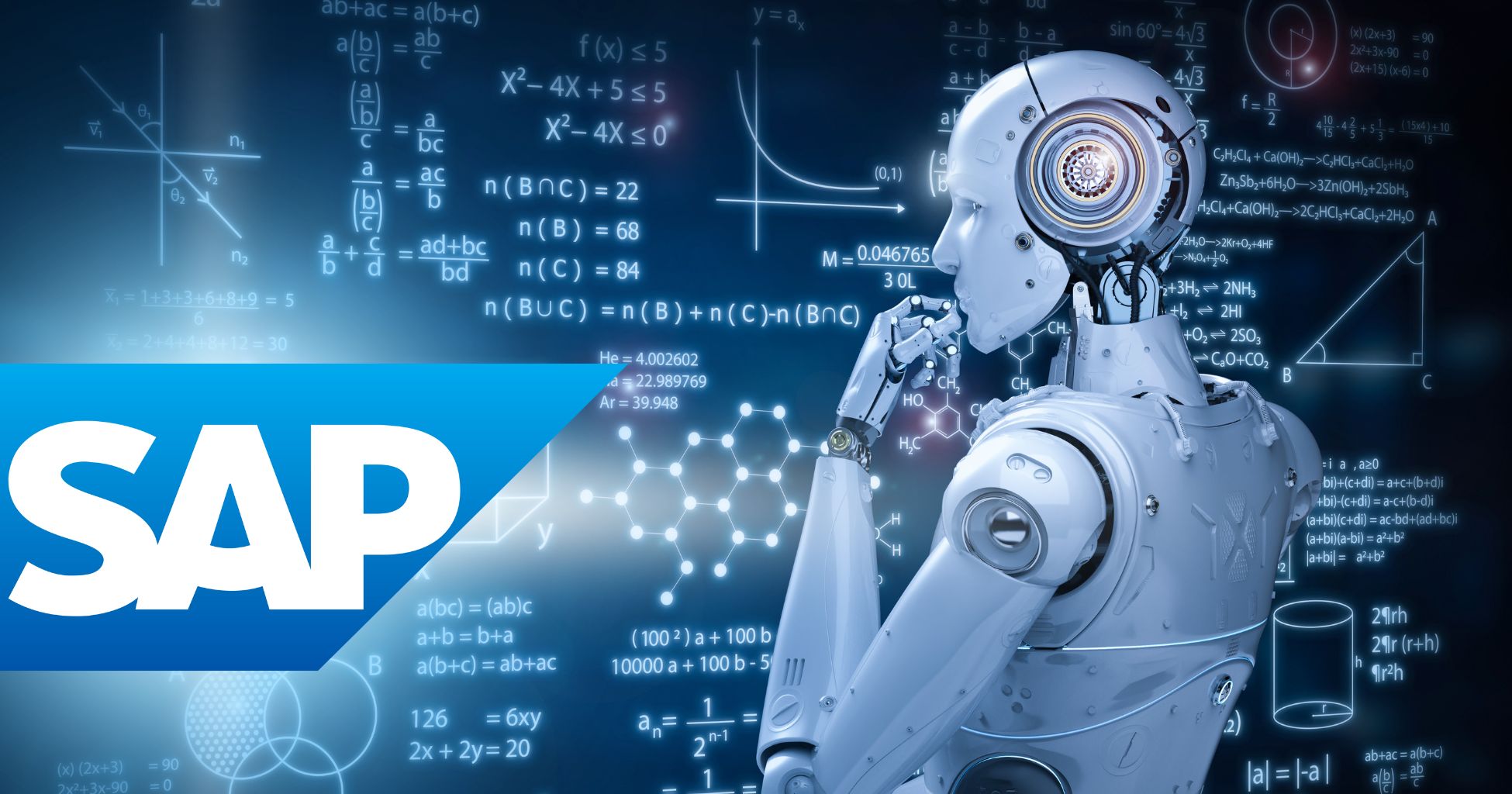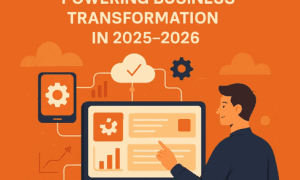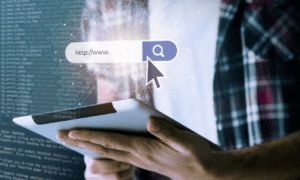SAP systems used to be the backbone of business logistics. Over time, they transformed into AI-driven machines that now quietly manage the financial arteries of some of the largest corporations in the world.
These systems offer what every enterprise wants: speed, efficiency, and what feels like flawless automation. But underneath all of this, something else may be taking shape. With companies rushing to deploy AI code assistants to automate critical processes, the real question is starting to surface. Are we accidentally building the next big failure?
History has shown that when systems grow too complex, too interconnected, and too heavily relied upon, they reach a dangerous point. They become too big to fail. And when they do fail, the fallout can be catastrophic.
Enterprise AI may already be on that path.
How Enterprise AI Quietly Took Over Global Systems
Enterprise AI did not arrive with fanfare. It crept in through the back doors of supply chains, financial platforms, and critical business operations. Tools like SAP AI Code Assistants, marketed as harmless productivity boosters, are now embedded in the daily workflows of some of the world’s largest corporations.
The global business landscape has quietly become dependent on these AI systems, often without fully understanding the complexity and risk they introduce. This quiet takeover raises urgent questions: who monitors these invisible forces, and what happens if they fail?
SAP and the Surge in AI-Powered Business Automation
SAP has aggressively integrated AI into its core platforms, including Joule and SAP AI Code Assistants, which are now shaping the future of enterprise software development. Joule acts as an embedded AI copilot across SAP applications, while SAP AI Code Assistants allow developers to rapidly generate, optimize, and deploy code directly within SAP systems.
This AI surge is not a fringe experiment. It is now mainstream, with enterprises using generative AI to speed up software delivery, automate repetitive processes, and reduce manual intervention.
But as businesses race to unlock productivity gains, few are asking whether this pace leaves enough room for oversight, security, and risk management. The faster the code is written, the faster potential flaws can spread.
Why Enterprises Are Rushing to Automate with AI
Enterprises are racing toward AI automation for clear, bottom-line reasons: lower operational costs, faster project delivery, and the promise of reduced human error. AI code assistants, particularly in SAP systems, allow businesses to roll out new software updates and process improvements in record time.
The allure of cost efficiency and speed is driving aggressive adoption across industries. However, what often remains hidden beneath this productivity surge is a growing complexity that few organizations are equipped to govern.
As companies chase automation at scale, they inadvertently introduce governance gaps and oversight blind spots. Some have turned to solutions like SAP AI code assistants that provide real-time monitoring and risk controls to help keep these fast-moving systems in check before they create larger systemic risks.
How AI in SAP Systems Creates Invisible Risks
As enterprise AI spreads deeper into SAP systems, the speed and scale of automation are beginning to outpace traditional oversight. The problem is not just about writing code faster. It is about introducing layers of complexity that often go unnoticed until something goes wrong.
SAP’s growing AI backbone, while highly efficient, creates risks that are not immediately visible. These are risks that could quietly accumulate and trigger failures across interconnected industries.
Overreliance on AI Code Assistants
The convenience of AI code assistants has led to a dangerous overreliance in enterprise environments. In many cases, AI now writes significant portions of enterprise code, and much of it goes live without the rigorous manual reviews once considered essential.
Take SAP AI Code Assistant, for example. It dramatically accelerates development by auto-generating SAP-specific code that integrates seamlessly into complex enterprise systems. While this speed is celebrated, it also bypasses traditional quality control steps.
Unchecked code deployment, overconfidence in automation, and compound errors are key risks that quietly embed systemic weaknesses. What seems like operational efficiency on the surface can create the perfect conditions for silent, large-scale failures downstream.
Systemic Dependencies and Tech Stack Vulnerabilities
SAP sits at the center of global finance, logistics, and supply chain management. Major banks, manufacturers, and governments rely on its systems to coordinate the movement of money, goods, and data across continents. This dominance creates a tightly connected ecosystem where a single failure can ripple through multiple sectors.
When enterprises layer AI automation on top of these critical SAP systems, the stakes become even higher. A small AI-generated bug is not just a local issue. It can quietly spread across interconnected workflows and industries.
Consider these cascading risks:
- Financial disruptions: A minor code error in a SAP-driven treasury module could trigger miscalculations across global payment systems.
- Supply chain breakdowns: Faulty automation logic could delay shipments or misroute materials across international suppliers.
- Compliance failures: Inaccurate AI-generated updates could lead to regulatory breaches in multiple jurisdictions.
What may appear as an isolated system error could, under the weight of SAP’s global reach, escalate into a cross-industry disruption.
Potential Failure Points in AI-Driven SAP Systems
While the benefits of AI-driven SAP systems are heavily marketed, their failure points are often overlooked until they surface at scale. As enterprises adopt AI code assistants and automated migrations, they open doors to subtle but dangerous weaknesses that can destabilize entire workflows.
These failure points are not isolated glitches. They have the potential to quietly spread across global systems, compounding risks over time. Understanding where and how these breakdowns can occur is essential for preventing a small misstep from spiraling into a system-wide disruption.
Data Corruption from AI Migrations
Automated AI-driven data migrations are often seen as time-saving and cost-efficient, but they introduce subtle risks that can go undetected until financial reports start to unravel. When SAP systems rely on AI to restructure, transfer, or reconcile massive datasets, even minor mapping errors can silently corrupt critical financial records.
Silent schema mismatches can occur when AI auto-maps data fields incorrectly without triggering visible errors. Small data inconsistencies can cascade into larger financial discrepancies over time. Automated migrations can unintentionally omit key data points, creating blind spots in compliance and auditing processes.
These risks can linger within enterprise systems, only surfacing during regulatory audits or major reconciliations. By then, the damage is often costly and difficult to untangle.
Security Risks in AI-Generated Scripts
AI-generated scripts are often deployed without the same rigorous security vetting applied to manually written code. The speed at which these scripts are produced can bypass standard review processes, leaving systems vulnerable to exploitation.
SAP environments that rely on AI-generated automation can unintentionally introduce security gaps that are not covered by traditional protocols. These scripts might lack the defensive layers typically inserted by experienced developers, making them easier targets for cyberattacks.
Over time, as these unverified scripts accumulate, they can create a network of hidden vulnerabilities that expose the entire enterprise system to serious security threats.
AI-Induced Process Failures
AI-generated automation can introduce subtle process errors that quickly compound across enterprise operations. When SAP systems rely heavily on AI to execute, monitor, and optimize business processes, the risk of unintended automation paths increases.
AI-generated logic may execute tasks in the wrong sequence, misinterpret transaction patterns, or bypass critical approval gates, causing failures that ripple across supply chains, financial workflows, and regulatory processes.
These process failures are often difficult to detect because the AI performs exactly what it was programmed to do, even if the underlying logic was flawed from the beginning.
By the time discrepancies surface, the damage may already be woven into daily operations, making the failures complex and costly to unwind.
Versioning Conflicts and Silent System Drift
As SAP systems is evolving with AI-generated updates, maintaining version consistency becomes a hidden challenge. AI-driven scripts and automated code deployments can quietly introduce versioning conflicts that disrupt the harmony between system modules.
Over time, without careful oversight, these systems may drift apart, with critical components operating on mismatched versions that create silent inefficiencies or outright failures. This system drift is often invisible until errors accumulate, causing unexpected breakdowns or data misalignments across enterprise platforms.
When left unchecked, versioning conflicts can erode system reliability, making the entire architecture more fragile and difficult to stabilize.
Industry and Academic Warnings About AI Risks
The risks posed by AI-driven enterprise systems are not just speculative. They have been flagged by both industry experts and academic researchers as potential systemic threats.
A 2021 report by the OECD explicitly warned about the dangers of overreliance on opaque AI models in high-stakes sectors like finance, noting that these systems could lead to “large-scale failures that propagate quickly.”
Similarly, the U.S. National Institute of Standards and Technology (NIST) has emphasized the need for rigorous AI governance to mitigate cascading risks in interconnected systems (NIST, 2023).
Academic researchers have also raised concerns. In a 2023 paper, Bryson and Theodorou cautioned that AI systems embedded in complex financial and enterprise platforms could behave unpredictably, creating errors that amplify through automated decision-making layers (Bryson & Theodorou, 2023).
Compounding these concerns is the regulatory lag. As highlighted by a 2022 World Economic Forum white paper, the pace of AI development in enterprise environments is moving faster than governments can create, test, and enforce effective safeguards (WEF, 2022).
This regulatory gap leaves enterprises deploying AI in SAP and other core systems with minimal external oversight, increasing the chance of systemic vulnerabilities going unchecked until a major failure occurs.
How Enterprises Can Mitigate SAP AI Risks
Enterprises can take proactive steps to reduce the risks associated with AI-driven SAP systems, but doing so requires more than surface-level adjustments. Effective mitigation strategies must involve continuous oversight, technical safeguards, and robust governance structures that evolve alongside the rapidly changing AI landscape.
Implement Real-Time AI Monitoring Systems
Enterprises must deploy AI monitoring tools that track AI-generated code, system updates, and process flows in real time. This helps identify unexpected behavior or errors before they spread across interconnected operations.
Establish Multi-Layered Governance Frameworks
Building dedicated governance teams focused on AI oversight within SAP environments is essential. These teams should regularly review AI-generated code, assess systemic risks, and enforce versioning controls to prevent silent system drift.
Conduct Routine AI Safety Audits
Regular AI safety audits, both internal and through third-party experts, can uncover security vulnerabilities, process failures, and versioning conflicts that might otherwise go unnoticed. These audits provide an independent checkpoint to verify that AI-driven systems remain stable and secure.
Reinforce Human Oversight and Code Review Processes
Even as AI speeds up development, enterprises must keep manual code reviews and process checks in place. These are not just backups. Human oversight is essential to catch what AI might miss.
And when AI and people work together, they cover more ground. Machine speed paired with human judgment can spot errors and fill blind spots that neither side can fully handle alone. This mix of AI and human review gives enterprises the best chance to stay both efficient and safe.
Invest in AI Training for SAP Development Teams
Ongoing training ensures that developers and system administrators fully understand the capabilities and limitations of AI code assistants. Well-informed teams are better equipped to identify risks, apply controls, and maintain system resilience.
Conclusion
Enterprise AI has slowly worked its way into the center of global operations, especially within SAP systems. It is not loud or obvious, but it is there. And it is not without risk. These risks are subtle and complex. They often slip past teams that are too focused on speed and efficiency to notice them.
Some might dismiss these risks as theoretical, but they are not. They are real, and they have the power to quietly destabilize entire industries. But not all is lost. Enterprises that stay disciplined, that build habits of governance and regular review, will be the ones best prepared to manage this shifting landscape.
Others, sadly, may only realize the size of the problem when it is already too late.
By then, the damage could be impossible to reverse.
Read More From Techbullion



































